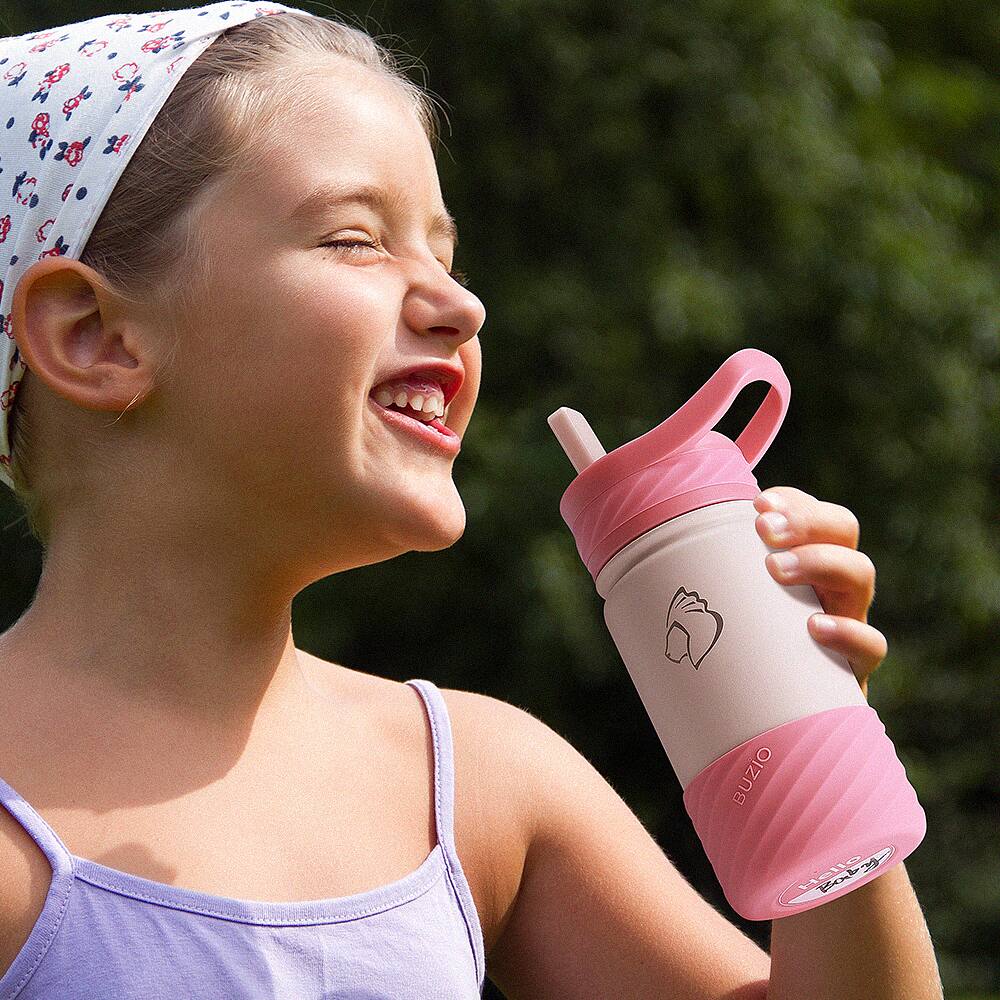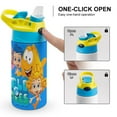Insulated Water Bottle With Silicone Straw

The market for reusable water bottles continues to expand with the introduction of innovative designs, the latest being an insulated water bottle featuring a silicone straw, aiming to blend convenience with environmental consciousness.
This new offering attempts to address consumer demand for hydration solutions that are both practical and sustainable, reflecting a broader societal shift towards eco-friendly alternatives to single-use plastics.
Key Features and Design
The insulated water bottle, typically constructed from stainless steel, promises to keep beverages cold for up to 24 hours or hot for up to 12, according to manufacturer claims.
The inclusion of a silicone straw aims to provide a comfortable and easy drinking experience, while the bottle's insulation technology minimizes condensation, preventing water rings on surfaces.
Many models feature a powder-coated exterior for enhanced grip and durability. This is according to product descriptions across major retailers like Amazon and Target.
The Silicone Straw Advantage
The silicone straw is a key differentiating factor, moving away from traditional plastic straws or hard spouts.
Silicone is a food-grade material known for its flexibility, heat resistance, and ease of cleaning. It is also considered a safer alternative to plastic, as it is less likely to leach chemicals.
Furthermore, many brands are designing these straws to be easily removable for cleaning and replacement, addressing hygiene concerns.
Market Trends and Consumer Demand
The rise in popularity of reusable water bottles is closely linked to increasing awareness of plastic pollution and its impact on the environment.
Organizations like the Environmental Protection Agency (EPA) have highlighted the detrimental effects of single-use plastics, encouraging consumers to adopt reusable alternatives.
The global reusable water bottle market is projected to reach billions of dollars in the coming years, indicating a strong and sustained demand. This information is per a report from Grand View Research.
Environmental Impact and Sustainability
The primary benefit of reusable water bottles, including those with silicone straws, is the reduction of plastic waste.
By switching from disposable bottles, individuals can significantly decrease their contribution to landfills and ocean pollution.
However, it's important to consider the manufacturing process and the materials used in production. Stainless steel, while durable, requires energy-intensive mining and production processes.
Potential Drawbacks and Considerations
Despite the benefits, there are some potential drawbacks to consider.
Cleaning the straw and bottle thoroughly is crucial to prevent bacterial growth. Consumers should follow manufacturer instructions for cleaning and maintenance.
The cost of a high-quality insulated water bottle with a silicone straw can be higher than that of a basic plastic bottle, which might be a barrier for some consumers. However, the long-term cost savings from avoiding disposable bottles can offset this initial investment.
Health and Safety Aspects
The use of food-grade silicone in straws minimizes the risk of harmful chemicals leaching into beverages.
However, consumers should ensure that the product is certified by reputable organizations like the Food and Drug Administration (FDA) to guarantee safety standards.
Regular inspection of the straw and bottle is recommended to identify any signs of damage or wear and tear, which could compromise hygiene.
The Competitive Landscape
The market for insulated water bottles is highly competitive, with numerous brands offering variations in design, size, and features.
Established companies like Hydro Flask and Yeti compete with newer entrants offering innovative designs and eco-friendly materials.
The inclusion of a silicone straw is becoming a more common feature as brands strive to differentiate themselves and appeal to health-conscious consumers. Brand recognition plays an important role.
Future Trends and Innovations
Future trends in the reusable water bottle market are likely to focus on further improving sustainability and convenience.
This could include the use of recycled materials, more efficient insulation technologies, and smart features like hydration tracking.
Innovations in straw design might also emerge, such as self-cleaning straws or straws made from biodegradable materials.
Conclusion
The insulated water bottle with a silicone straw represents a step towards a more sustainable and health-conscious approach to hydration.
While there are some considerations regarding cost and maintenance, the benefits of reducing plastic waste and enjoying convenient, temperature-controlled beverages are appealing to a growing number of consumers. Consumer choice will determine the direction of the industry.
As awareness of environmental issues continues to rise, reusable water bottles are poised to remain a popular and essential accessory for individuals seeking to make a positive impact.
















